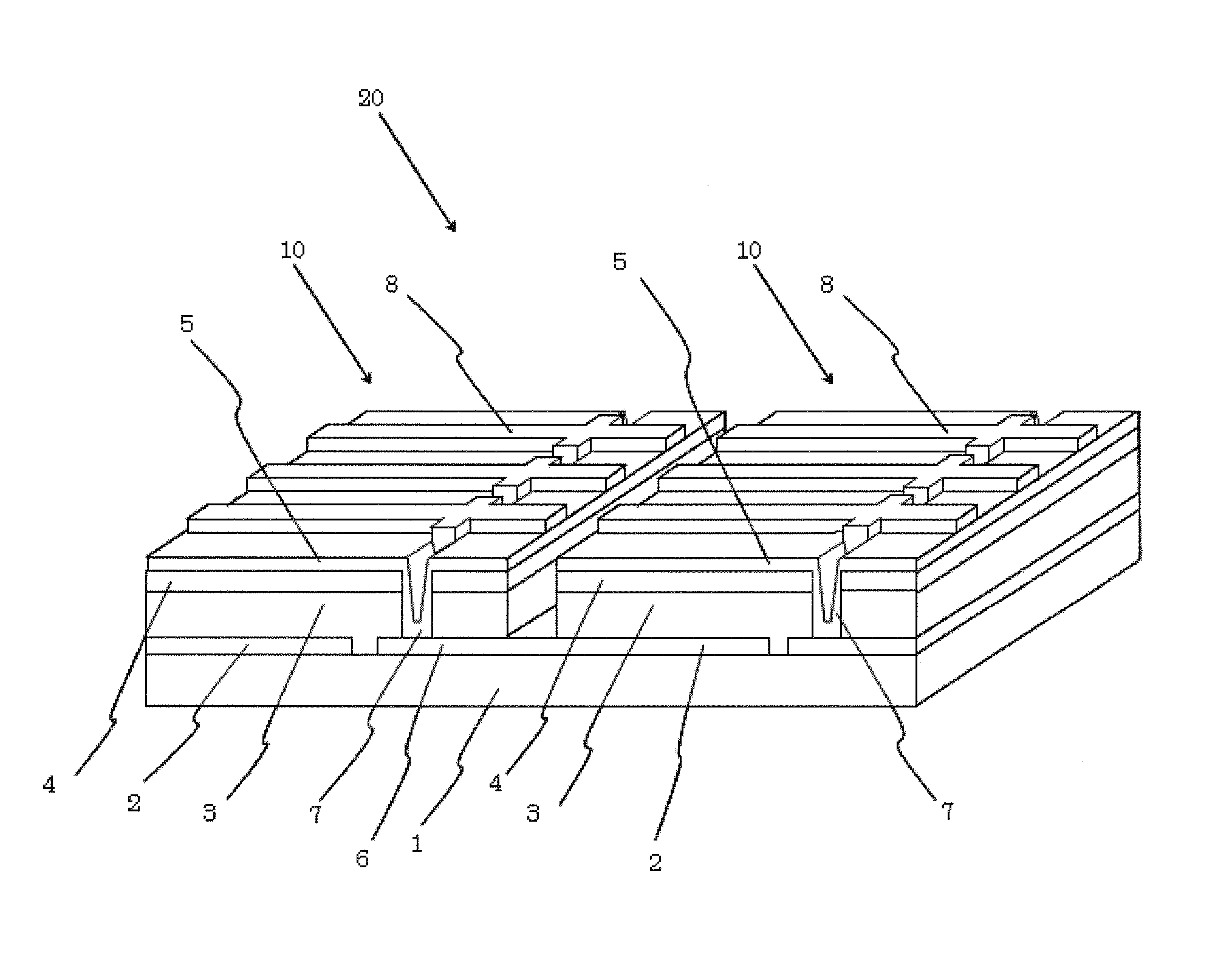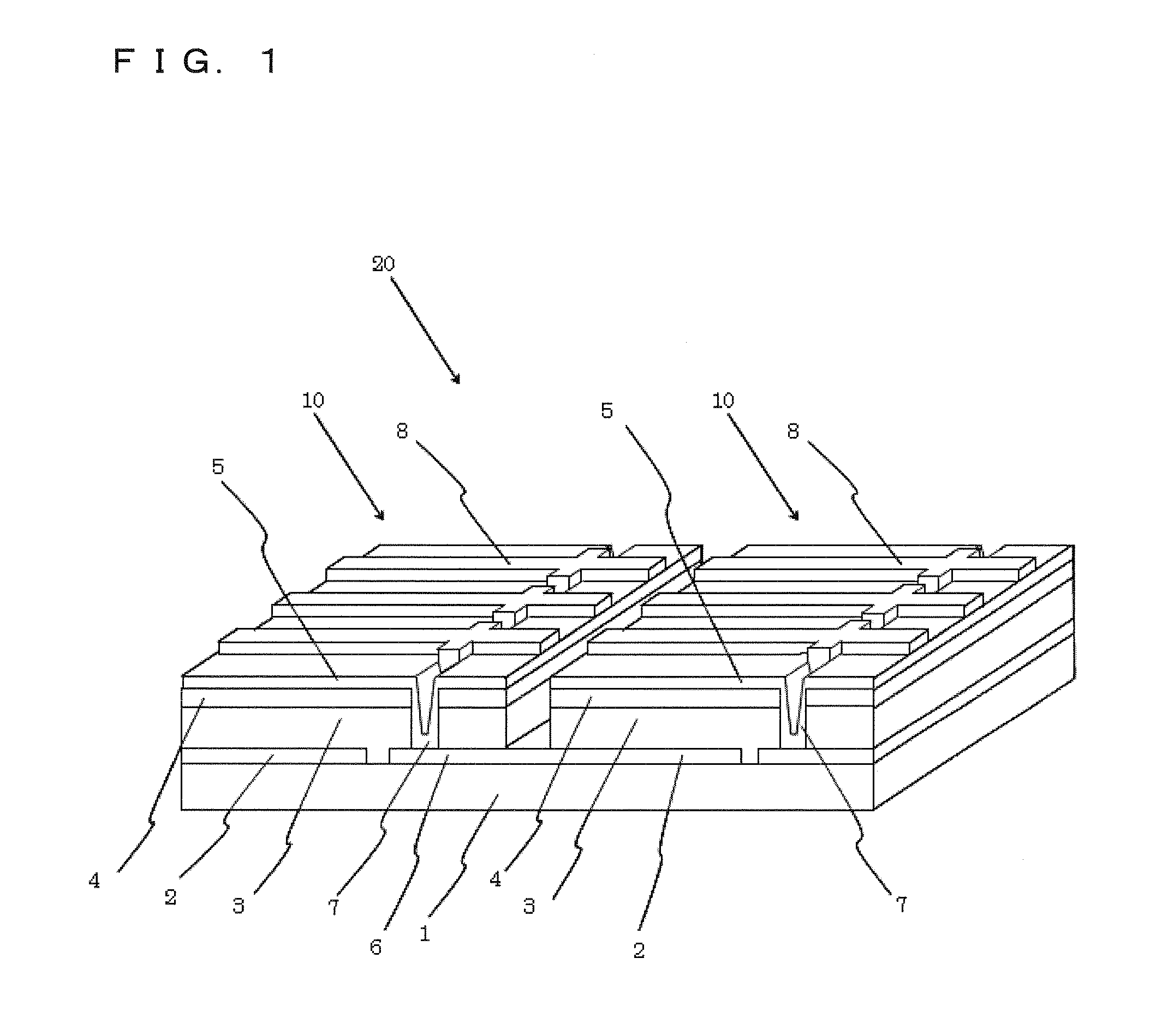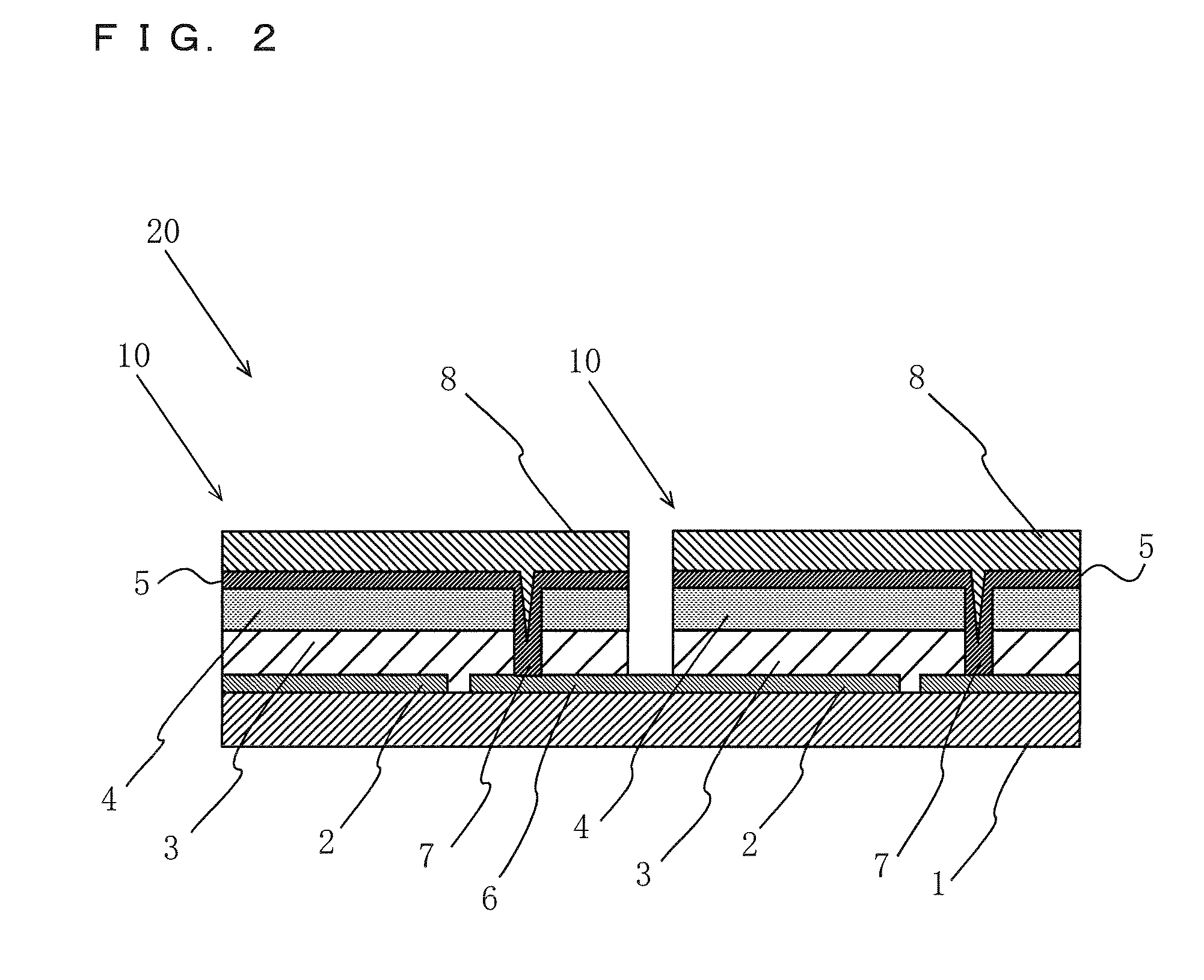Photoelectric conversion device
a conversion device and photoelectric technology, applied in the direction of energy conversion device, semiconductor device, electrical apparatus, etc., can solve the problems of reducing the diffusion length of minority carriers (electrons) generated reducing being susceptible to defects present in the light-absorbing layer. , to achieve the effect of improving the photoelectric conversion efficiency, reducing the occurrence of recombination, and reducing the diffusion length
- Summary
- Abstract
- Description
- Claims
- Application Information
AI Technical Summary
Benefits of technology
Problems solved by technology
Method used
Image
Examples
Embodiment Construction
[0010]As shown in FIGS. 1 and 2, a photoelectric conversion device 10 according to an embodiment of the present invention includes a substrate 1, a first electrode layer 2, a first semiconductor layer 3, a second semiconductor layer 4, and a second electrode layer 5. The photoelectric conversion device 10 includes a third electrode layer 6 spaced apart from the first electrode layer 2 and located on the substrate 1 side of the first semiconductor layer 3. The neighboring photoelectric conversion devices 10 are electrically connected to each other by a connection conductor 7. That is, the second electrode layer 5 of one photoelectric conversion device 10 and the third electrode layer 6 of the other photoelectric conversion device 10 are connected by the connection conductor 7. The third electrode layer 6 also serves as the first electrode layer 2 of the neighboring photoelectric conversion device 10. As a result, the neighboring photoelectric conversion devices 10 are connected to ea...
PUM
 Login to View More
Login to View More Abstract
Description
Claims
Application Information
 Login to View More
Login to View More - R&D
- Intellectual Property
- Life Sciences
- Materials
- Tech Scout
- Unparalleled Data Quality
- Higher Quality Content
- 60% Fewer Hallucinations
Browse by: Latest US Patents, China's latest patents, Technical Efficacy Thesaurus, Application Domain, Technology Topic, Popular Technical Reports.
© 2025 PatSnap. All rights reserved.Legal|Privacy policy|Modern Slavery Act Transparency Statement|Sitemap|About US| Contact US: help@patsnap.com



